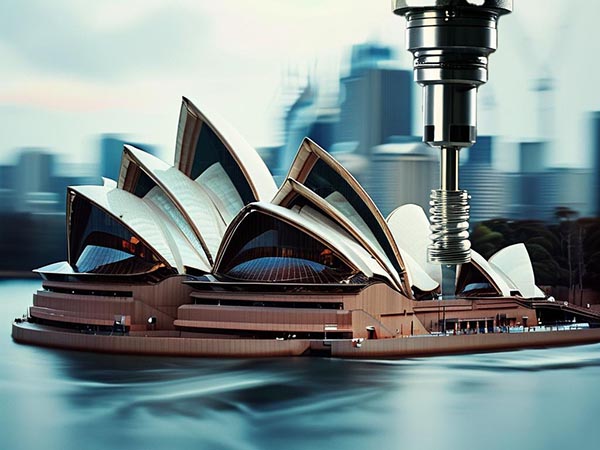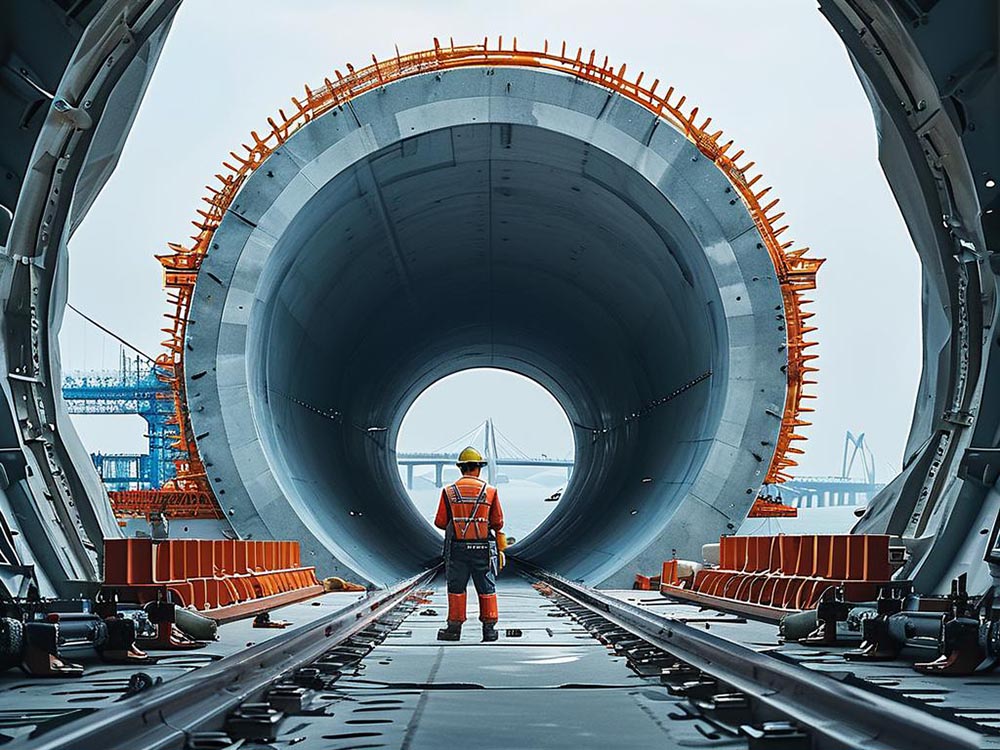The Hidden Secrets of World Landmarks: How Small Tools Build Big Wonders
When the spire of the Burj Khalifa pierces the desert sky, or the titanium sails of the Sydney Opera House hum quietly in the ocean breeze, people marvel at the imagination of architects—but rarely notice the unsung heroes hidden in the seams of steel: specialized engineering tools. In the 50°C desert heat, under 45 meters of seawater pressure, or deep within microscopic threads finer than a strand of hair, these precision instruments conduct millimeter-level negotiations to turn dreams into structure. Like silent interpreters, they translate human visions of space into the grammar of steel, etching modern engineering epics in the sparks of every cut.
1. The “Screw Doctor” of the Burj Khalifa
- The Problem: During construction of the world’s tallest tower, standard tools failed under the desert’s extreme heat—tightening a screw felt like slicing steak with a blunt knife: inefficient and error-prone.
- The Solution: Engineers deployed special alloy taps infused with a “heatstroke prevention formula”:
- A self-lubricating protective film ensured longer tool life in sandblasted environments
- Unique thread geometry guaranteed perfect fits for every bolt
- Tech Fact: These tools reduced inspection and maintenance frequency by two-thirds—eliminating over 3,000 instances of high-altitude rework.
2. The “Metal Tailor” Behind the Sydney Opera House
- The Challenge: Trimming thousands of titanium “sails” was like carving patterns into soda cans—one slip could cause a catastrophic tear.
- The Solution: Milling cutters with spring-like buffering behavior were developed:
- Six blades at varied angles distributed cutting forces evenly
- A self-adjusting cutter head delivered hair-thin precision with every pass
- Fun Fact: This technique was later adapted for machining luxury cruise ship propellers.
3. The “Underwater Pangolin” of the Hong Kong-Zhuhai-Macao Bridge
- The Challenge: Drilling into the seabed 45 meters deep was like trying to hammer nails into jelly.
- The Breakthrough: A dual-channel waterproof drill bit was invented:
- Built-in capillary channels continuously supplied cooling fluid
- Special coatings allowed smooth penetration of both steel and fiberglass-reinforced concrete
- Impact: Reduced a 36-hour drilling task to just 12 hours.
4. The “Micro-Carver” of the Guggenheim Museum
- The Precision Task: Engraving micro-threads onto 30,000 titanium tiles—akin to drawing 10 parallel lines across a fingernail.
- The Innovation: Microscope-grade ultrafine taps:
- Anti-adhesive coatings prevented chip buildup
- Dual-angle fluting mimicked the precision of two pens tracing one outline
- Little-Known Fact: Each tap cost as much as a smartphone.
5. The “Seismic Steward” of the Shanghai Tower
- The Mission: Polishing the thousand-ton tuned mass damper to mirror-level smoothness—demanding near-optical precision.
- The Secret Weapon: A “dancing” intelligent milling cutter:
- Blade angles shifted in real-time, slicing in smooth, wave-like paths
- An automatic balancing system neutralized micro-vibrations
- Analogy: Like peeling an apple in the eye of a category 5 typhoon—clean, smooth, and unfaltering.
6. Industry Insights
- Global specialized engineering tool market grows at 17.2% annually
- Custom tool demand in construction has risen 300% in five years
- China’s import substitution rate for high-end custom tools has exceeded 43%
7. Conclusion: Precision is the True Foundation of Grandeur
From threaded joints atop cloud-piercing towers to precision boreholes beneath the seabed, these architectural feats unveil an often-overlooked truth: humanity’s conquest of space is grounded in mastery over the micro. When a tap carves a 0.001mm thread into titanium, or a milling cutter shapes a mirror finish amidst typhoon-grade tremors, the dialogue between tool and material transcends physics—it becomes poetry in motion.
These technological revolutions, folded within the curves of iconic buildings, remind us that the greatest creations are born from reverence for the smallest details. For every stunning skyline silhouette, there was once a blade edge in quiet communion with metal—etching civilization, one miracle at a time.



 We like to do design according to all the customers' requirements, or offer them our new designs. With strong OEM/ODM capabilities, we can fill your sourcing demands.
We like to do design according to all the customers' requirements, or offer them our new designs. With strong OEM/ODM capabilities, we can fill your sourcing demands.